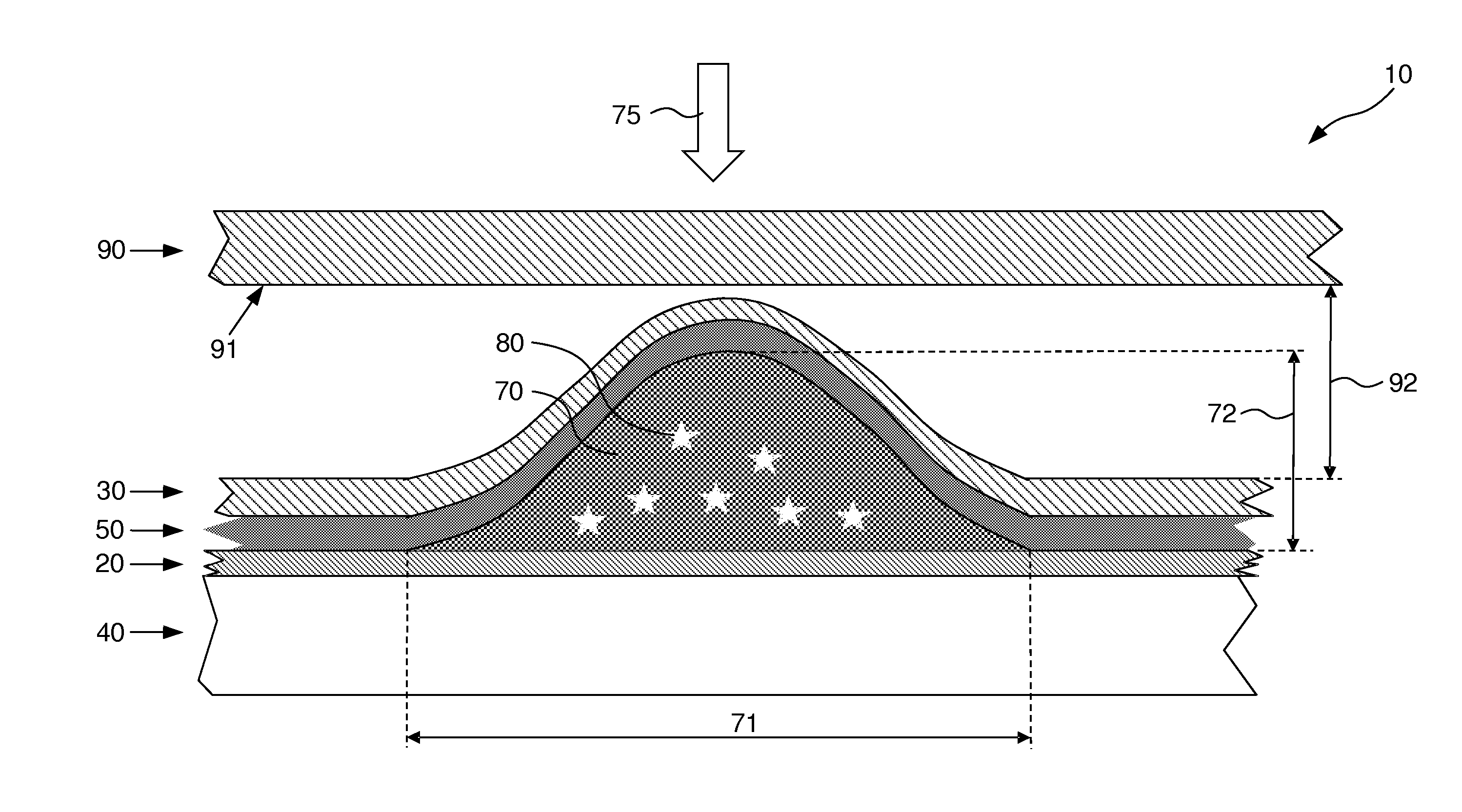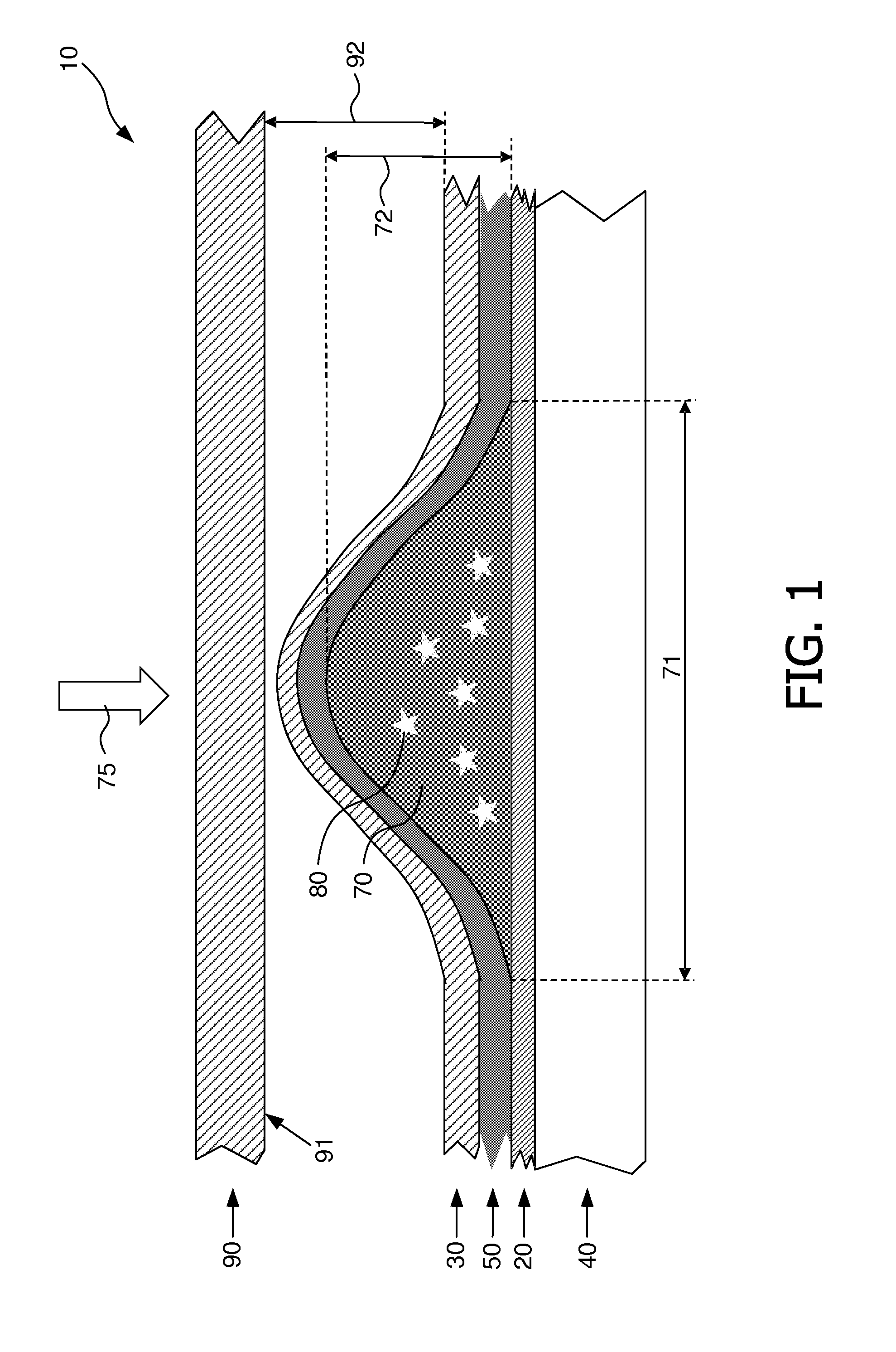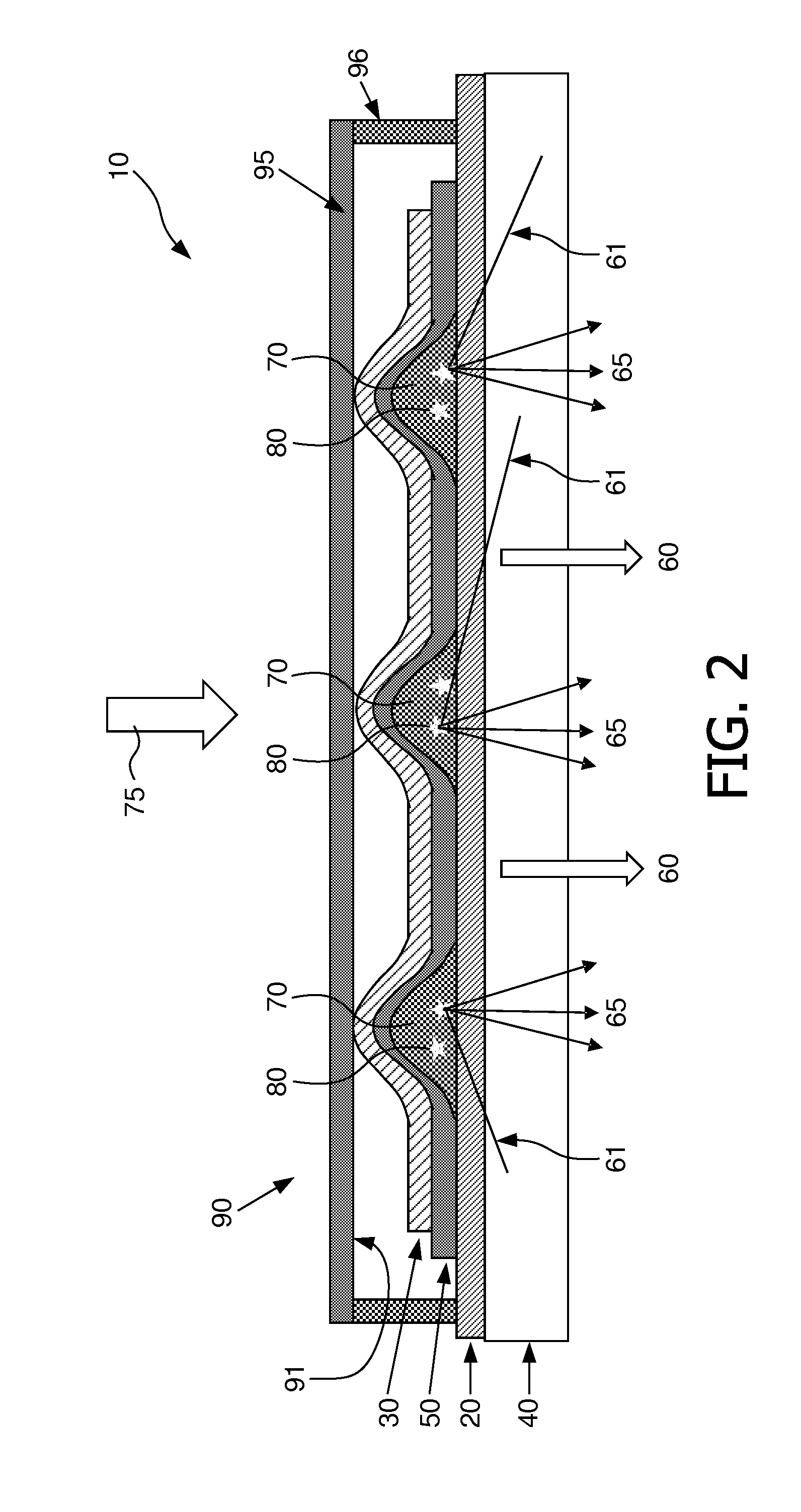Organic electroluminescent device
a technology of electroluminescent devices and organic materials, applied in the direction of discharge tubes/lamp details, discharge tubes luminescnet screens, organic semiconductor devices, etc., can solve the problem of brightening of otherwise non-emisive areas, and achieve the effect of preventing electrical shorts and improving light emission
- Summary
- Abstract
- Description
- Claims
- Application Information
AI Technical Summary
Benefits of technology
Problems solved by technology
Method used
Image
Examples
Embodiment Construction
[0044]FIG. 1 shows an electroluminescent device 10 (OLED) according to the present invention comprising a substrate 40 and on top of the substrate a substrate electrode 20, a counter electrode 30, an electroluminescent layer stack 50 and an encapsulation means 90. The electroluminescent layer stack 50 is arranged between the substrate electrode 20 and the counter electrode 30 comprising at least one organic light emitting layer. The electroluminescent layer stack has a thickness of typically 100-200 nm. The substrate electrode 20 is formed by an approximately 100 nm thick layer of ITO, which is a transparent and conductive material. On top of the substrate electrode 20 a spacer means 70 comprising scattering particles as the scattering means 80. For example the scattering particles 80 may be Aluminum particles with diameters of about 1 micrometer. Onto the substrate electrode 20 and the spacer means 70, the organic electroluminescent layer 50 and subsequently the counter electrode 3...
PUM
| Property | Measurement | Unit |
|---|---|---|
| height | aaaaa | aaaaa |
| height | aaaaa | aaaaa |
| thick | aaaaa | aaaaa |
Abstract
Description
Claims
Application Information
 Login to View More
Login to View More - R&D
- Intellectual Property
- Life Sciences
- Materials
- Tech Scout
- Unparalleled Data Quality
- Higher Quality Content
- 60% Fewer Hallucinations
Browse by: Latest US Patents, China's latest patents, Technical Efficacy Thesaurus, Application Domain, Technology Topic, Popular Technical Reports.
© 2025 PatSnap. All rights reserved.Legal|Privacy policy|Modern Slavery Act Transparency Statement|Sitemap|About US| Contact US: help@patsnap.com



